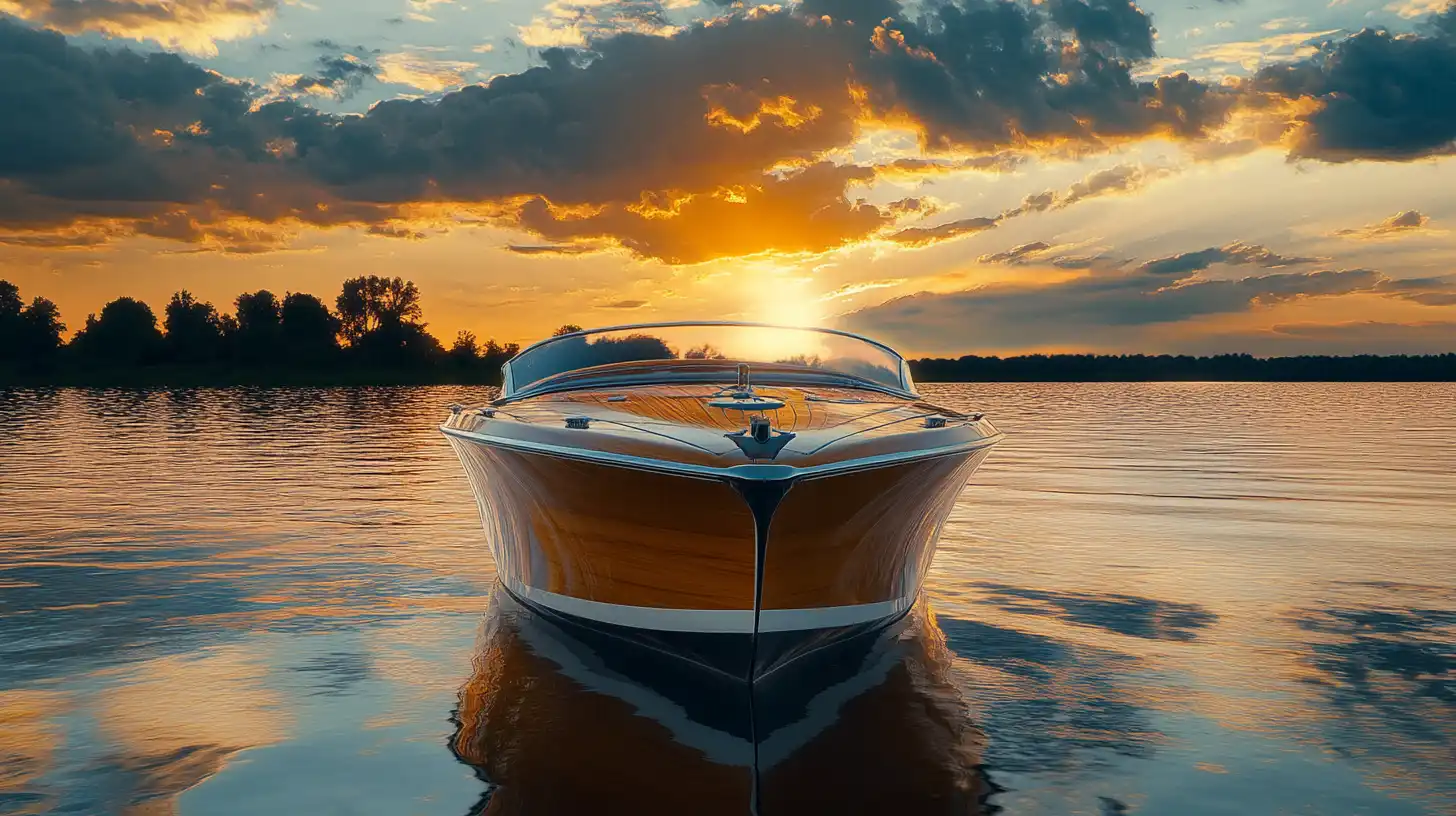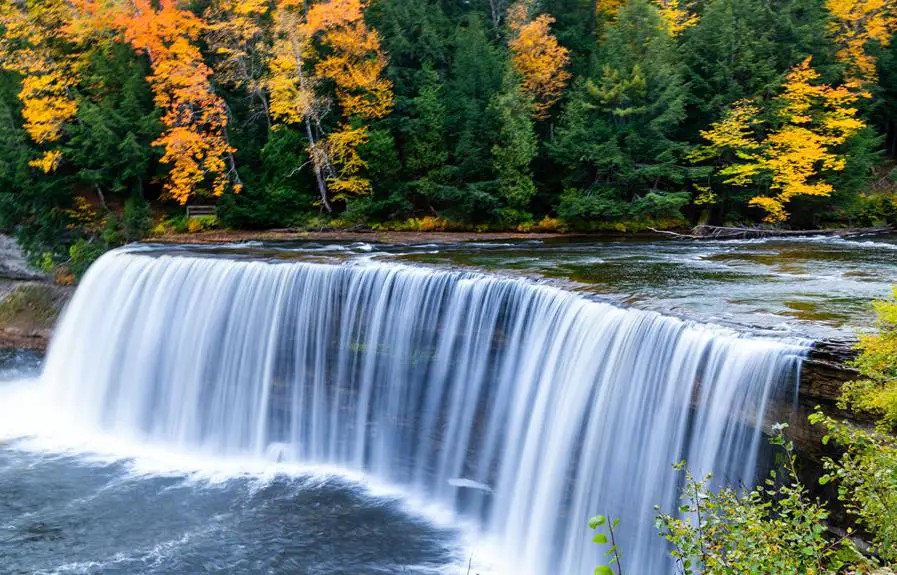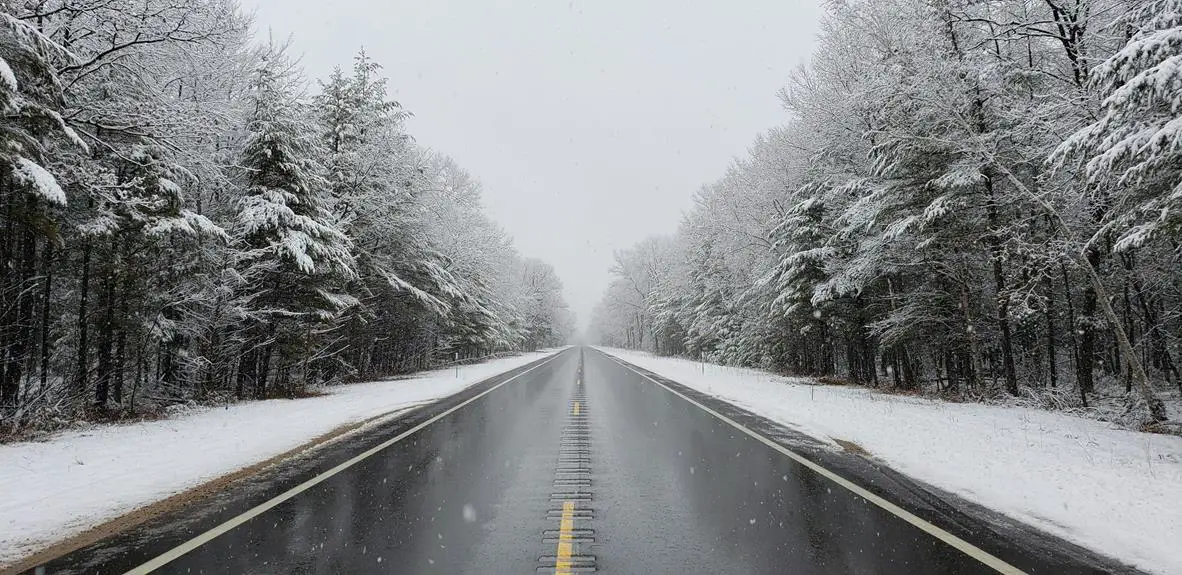Michigan’s 38-mile secret waterway odyssey, the Inland Waterway, presents an exciting adventure through diverse ecosystems and natural landscapes, featuring hidden gems like the Au Sable River and Manistee National Forest. As you navigate the waterways, you’ll encounter unique challenges and breathtaking scenery, from forests and wetlands to parks and dramatic geological formations like Sleeping Bear Dunes. With over 280 globally rare species and 46 endemic species present, the region is a haven for wildlife enthusiasts. As you set out on this aquatic journey, you’ll discover the importance of conservation efforts and community engagement in preserving Michigan’s natural beauty, and uncover the secrets that lie beneath the surface.
Michigan’s Hidden Waterway Gems
Thirty-eight miles of Michigan’s secret waterways await discovery, offering intrepid explorers a chance to paddle through diverse ecosystems and uncover the state’s hidden treasures.
Kayaking through these hidden waterways provides a unique opportunity to experience the state’s lesser-known rivers and lakes, such as the beautiful Au Sable River and the tranquil lakes of the Manistee National Forest.
With opportunities for wildlife observation along routes, paddlers can spot a variety of fish species, including trout and bass, and migratory birds such as those found on the Sturgeon River.
These serene paddling experiences are enhanced by the state’s glacial history, resulting in clear, cold streams that support a variety of fish species, including trout and bass.
Michigan’s hidden waterways are also essential habitats for numerous wildlife species, including migratory birds and aquatic life, making them crucial for ecological health and biodiversity.
Many of these waterways are located within state parks and nature preserves, promoting conservation efforts and providing access to pristine natural settings.
Exploring the Inland Waterway
Maneuvering the Inland Waterway presents boaters with unique challenges, including varying water levels, narrow channels, and scenic curves that require attention and skill.
As explorers make their way along the 38-mile route, they’ll encounter a diverse range of landscapes and ecosystems, from dense forests to open wetlands.
Waterway Navigation Challenges
Through its serpentine course, the Inland Waterway presents a unique set of challenges to boaters, requiring careful planning, attention to seasonal changes, and a keen sense of awareness to overcome the obstacles that lie ahead.
As an essential navigational route, the Inland Waterway demands attention to varying water levels, which can impact depth and flow, making it important for boaters to stay informed about seasonal changes. The waterway’s narrow passages and tight bends necessitate careful navigation, particularly for larger vessels, which must be vigilant about obstacles like submerged rocks and logs.
Additionally, boaters must contend with seasonal weather patterns, including strong winds and storms, which can impact visibility and water conditions. It is imperative for navigators to check forecasts and prepare for sudden changes, ensuring safe passage through the waterway.
Inland Route Exploration
As the Inland Waterway unwinds its serpentine path, a world of adventure and discovery awaits those who dare to explore its tranquil waters. This 38-mile waterway, which connects the northern lakes of Crooked Lake and Mullett Lake to Lake Huron, provides a scenic route for boaters and nature enthusiasts.
The Inland Waterway features a series of interconnected lakes and rivers, including the Crooked River and the Indian River, facilitating an enjoyable navigation experience through diverse ecosystems.
The waterway is renowned for its rich biodiversity, with numerous fish species such as bass, pike, and perch, making it a popular destination for fishing and outdoor recreation.
Along the route, travelers can explore picturesque communities like Indian River and Brutus, which offer amenities such as marinas, dining options, and local attractions.
As a designated National Scenic Byway, the Inland Waterway emphasizes its natural beauty and recreational importance, while also supporting the local economy through tourism.
With its unique blend of natural wonders and outdoor activities, the Inland Waterway is a must-visit destination for those seeking an unforgettable adventure in Michigan’s great lakes region.
Wildlife Wonders of the Great Lakes
While the Great Lakes are often celebrated for their majestic beauty and recreational opportunities, the region’s true natural treasures lie in its incredible biodiversity, boasting an astonishing array of wildlife that is as fascinating as it is fragile.
Michigan’s vast geographical area supports diverse wildlife across marshlands, forests, grasslands, and coastlines, which contributes to top outdoor adventure rankings in the state, enhancing its ecological significance.
The Great Lakes host a rich biodiversity, including over 280 globally rare species and 46 endemic species, showcasing the unique ecological significance of the region. This is evident in Isle Royale, home to the longest-running wildlife research project studying the moose-wolf dynamics, providing insights into predator-prey relationships in isolated ecosystems.
The region supports a variety of migratory and resident bird species, with over 250 species identified in areas like the Tamarac National Wildlife Refuge, including majestic sightings of bald eagles and trumpeter swans.
The Great Egrets, with their distinctive breeding plumage known as aigrettes, exhibit parental care by utilizing nesting islands for protection.
However, the introduction of over 180 exotic aquatic species poses significant threats to local fish populations and disrupts the natural food webs within the Great Lakes ecosystem.
Shores of Historical Significance
Michigan’s Great Lakes waterway is not only a haven for biodiversity but also a treasure trove of historical significance, with its shores telling the stories of centuries past.
The area of North Lake Michigan, stretching for approximately five miles, is particularly rich in historical importance. The indigenous peoples and European settlers relied heavily on the Great Lakes as critical transportation routes in the 17th century, facilitating trade and exploration.
In fact, inland lakes like Houghton Lake and Burt Lake also played a significant role in the region’s development, offering access to fishing and boating opportunities.
The region’s maritime heritage is showcased through the historical replica of the schooner Madeline, which sailed the Great Lakes for over 150 years, representing the shipbuilding prowess of the area.
Additionally, the numerous lighthouses, over 300 in total, built along the Great Lakes to aid navigation, demonstrate the region’s commitment to safe passage.
These historical landmarks and structures provide a glimpse into the region’s storied past, making the shores of Lake Michigan a must-visit destination for history enthusiasts.
Natural Landscapes and Formations
Thirty-eight miles of pristine waterway along Lake Michigan’s shoreline unfold to reveal a diverse array of natural landscapes and formations, showcasing the region’s unique geological and ecological features. Michigan’s waterways are characterized by diverse natural landscapes, including the 38-mile-long Huron River, which flows through picturesque scenery, including forests, wetlands, and parks.
| Formation | Description | Location |
|---|---|---|
| Sleeping Bear Dunes | The largest expanse of freshwater dunes in the world | Lake Michigan shoreline |
| Pictured Rocks National Lakeshore | 40-mile stretch of colorful sandstone cliffs | Lake Superior shoreline |
| Flowerpot Island | Unique sea stacks formed over thousands of years | Niagara Escarpment |
| Lake Michigan Waves | Steep and closely spaced freshwater waves | Lake Michigan |
The region’s geological formations are equally impressive, with the Sleeping Bear Dunes offering stunning views of Lake Michigan. Every hour, the lake’s average depth of 279 feet is shaped by its unique wave patterns, which are markedly different from those found in saltwater environments. As you navigate the waterway, you’ll encounter seven miles of scenic coastline, ripe for exploration and discovery.
Unique Weather Phenomena
Michigan’s unique geography creates a distinctive weather profile, characterized by lake effect snowfall and winter storm patterns that notably impact the region.
The state’s proximity to the Great Lakes generates heavy snowfall in coastal areas, particularly during winter months, while temperature variations of up to 4-8°F cooler along the lakeshore compared to inland regions further shape the local climate.
Michigan’s diverse wildlife, including biodiversity and wildlife, also adapt to these weather patterns, with species like the white-tailed deer and river otters thriving in the state’s varied habitats.
These factors contribute to a complex weather system that is both fascinating and influential in shaping the state’s natural landscapes.
Lake Effect Snowfall
Over the Great Lakes, a unique weather phenomenon unfolds, where cold air clashes with the relatively warm waters, giving rise to lake effect snowfall. This occurrence takes place when cold air moves over the warmer waters of the Great Lakes, resulting in increased snowfall on the downwind shores, particularly in areas like Michigan and parts of New York.
The unique geography of the Great Lakes allows for the formation of intense localized snow bands, which can dump several inches of snow in just a few hours. Lake effect snow is characterized by its fluffy, light texture, differing from the heavier, wetter snow typically seen in other winter storms, making it ideal for winter sports enthusiasts.
This phenomenon is most prevalent during late fall and early winter months when the water temperatures remain relatively warm while the air temperatures drop considerably. In some regions, particularly along the eastern Great Lakes, lake effect snowfall can lead to substantial snowfall amounts, often exceeding 100 inches in a season.
Winter Storm Patterns
As winter sets in, Michigan’s geography plays a vital role in shaping the region’s winter storm patterns, with the Great Lakes exerting a profound influence on the state’s climate. The unique combination of lake effect snow and wind chill factors creates extreme cold conditions, often reaching -30°F or lower. Notable winter storms can lead to blizzard conditions, characterized by wind gusts over 35 mph and visibility reduced to less than a quarter mile for extended periods.
| Winter Storm Patterns | Characteristics | Impact |
|---|---|---|
| Lake Effect Snow | Localized heavy snowfall events, up to several feet | Notable snowfall totals, especially in western and northern Michigan |
| Wind Chill Factors | Temperatures dropping to -30°F or lower | Extreme cold conditions, essential for residents to prepare |
| Blizzard Conditions | Wind gusts over 35 mph, visibility less than a quarter mile | Hazardous travel conditions, potential for power outages |
Michigan’s geography, with its peninsulas surrounded by the Great Lakes, allows for complex weather patterns that can cause rapid changes in temperature and precipitation, often within a single day during winter months. The region experiences an average of 60 to 100 inches of snowfall annually, with lake effect snow contributing notably to these totals.
Navigating the Great Lakes
Nearly 350 years of maritime history have shaped the navigation of the Great Lakes, with the first European explorers relying on indigenous guides to traverse the vast inland waters. The Great Lakes, comprising five interconnected freshwater lakes, form the largest group of freshwater lakes in the world by total area.
Historically, these lakes have facilitated trade and exploration since the 17th century, with over 300 lighthouses established to aid navigation before modern advancements.
Today, the lakes continue to serve as essential transportation routes, with unique challenges posed by dramatic geological features like Niagara Falls. The falls’ 167-foot vertical drop and five-foot-per-year erosion rate require careful navigation.
Additionally, the region’s weather phenomena, such as lake effect snow, can impact navigation and require specialized knowledge to navigate safely. The Great Lakes’ diverse ecosystems, home to numerous endemic and exotic species, add another layer of complexity to navigation.
Effective navigation of the Great Lakes demands a deep understanding of these complex factors, as well as a commitment to preserving the region’s delicate ecological balance.
Environmental Challenges Ahead
Michigan’s 38-mile waterway, an essential artery for commerce and recreation, is simultaneously facing unprecedented environmental challenges that threaten its very existence.
The Great Lakes region, of which this waterway is a part, has lost over 117 million acres of wetlands, with an alarming annual rate of 300,000 acres due to urbanization and agricultural expansion.
Climate change further exacerbates the issue, affecting water temperatures, species distributions, and aquatic habitats.
The introduction of exotic aquatic species, primarily through shipping channels, disrupts local biodiversity and alters food webs, leading to declines in native species populations.
The invasive sea lamprey, in particular, poses a significant threat, with each individual capable of destroying over 40 pounds of fish in its lifetime.
Additionally, urban development reduces natural ground cover and ecosystem functions, increasing stormwater runoff and pollution entering waterways.
These cumulative challenges imperil the long-term health and sustainability of Michigan’s 38-mile waterway, necessitating urgent attention and action to mitigate their impacts.
Conservation Efforts and Successes
While the environmental challenges facing Michigan’s 38-mile waterway are formidable, a concurrent narrative of conservation efforts and successes offers a promising counterpoint.
Michigan’s conservation initiatives have yielded tangible results, with over 1,000 acres of wetlands restored in the Great Lakes region, essential for maintaining biodiversity and water quality. The Michigan Department of Natural Resources’ thorough management plan has benefited over 280 globally rare species through habitat restoration and species protection.
Collaborative initiatives, such as the Great Lakes Restoration Initiative, have invested over $2 billion since 2010 to address pollution, habitat loss, and invasive species. Local community engagement programs have led to increased public awareness and participation, resulting in over 500 volunteer-led cleanup events annually.
Successful reintroduction programs for native fish species, like the lake sturgeon, have seen population increases of over 1,000 individuals in select Michigan rivers. These conservation successes demonstrate the positive impact of focused strategies, offering hope for the long-term health and sustainability of Michigan’s 38-mile waterway.
Local Communities and Hospitality
Through the heart of southeastern Michigan, the Huron River flows, stitching together a tapestry of local communities that warmly welcome visitors and residents alike to experience their unique brand of hospitality.
As the river weaves its way through charming towns like Dexter and Ann Arbor, it creates opportunities for residents and visitors to engage in recreational activities like canoeing and kayaking, fostering a sense of community and connection.
These small towns offer a range of charming cafes and local restaurants, where visitors can experience the region’s unique cuisine and warm hospitality.
The river’s path supports local economies, attracting outdoor enthusiasts who take advantage of rentals, guided tours, and accommodations tailored for waterway explorers.
Community events, such as river clean-up days and seasonal festivals, bring residents together, promoting stewardship of the waterway and enhancing local hospitality.
Local organizations and volunteer groups work together to maintain the river’s health and accessibility, ensuring that hospitality extends beyond just services to include environmental care and community spirit.
Waterway Odyssey Preparation Tips
As you prepare to commence your Huron River adventure, it’s important to take a thoughtful approach to planning and preparation. A well-planned trip guarantees a safe and enjoyable experience, allowing you to focus on the breathtaking scenery and unique wildlife that Michigan’s 38-mile waterway has to offer.
To guarantee a successful journey, consider the following important preparation tips:
- Map it out: Obtain a detailed map of the waterway, highlighting its twists and turns to aid navigation.
- Weather awareness: Check local weather reports and be prepared for sudden changes, as the Great Lakes region is known for its rapid weather shifts.
- Safety first: Bring all necessary safety equipment, including life jackets, a first aid kit, and a whistle, as required by Michigan regulations for waterway travel.
Additionally, plan your trip during the warmer months when water temperatures are more comfortable, and take the time to familiarize yourself with the local wildlife and biodiversity that thrive in Michigan’s aquatic ecosystems.
Preserving Michigan’s Natural Beauty
Michigan’s natural beauty is deeply intertwined with its vast network of waterways, which provide crucial habitats for diverse wildlife and support complex ecosystems.
The state’s wetlands, though considerably reduced, play an important role in flood control, water purification, and maintaining biodiversity, underscoring the need for conservation efforts. The Great Lakes, comprising over 20% of the world’s freshwater supply, face environmental challenges such as pollution and invasive species, necessitating protective measures.
Conservation initiatives in Michigan focus on restoring natural habitats and protecting endangered species, guaranteeing that the state’s rich biodiversity is preserved for future generations.
Community engagement in conservation efforts, such as volunteer clean-up events and educational programs, fosters a sense of stewardship and highlights the significance of maintaining Michigan’s natural landscapes.
By protecting its waterways and natural habitats, Michigan can preserve its natural beauty and guarantee a healthy environment for its inhabitants.
It is crucial to continue conservation efforts to safeguard the state’s natural treasures for generations to come.
Common Questions
How Do I Get to Water Plaza Mario Odyssey?
To access Water Plaza in Super Mario Odyssey, navigate through the Sand Kingdom, overcoming obstacles and utilizing Cappy’s capture ability to reach the entrance marked by a large water fountain.
Where Is the Super Secret Zipper in Mario Odyssey?
The Super Secret Zipper in Mario Odyssey is located in the Wooded Kingdom, on the large tree’s side near the level’s entrance, requiring thorough exploration to discover and activate it for hidden areas and collectibles.
How to Get Rid of the Rock in Mario Odyssey?
To remove obstacles in Mario Odyssey, locate the blocking rock, then utilize Cappy to capture a creature like a Chain Chomp to break it, or perform a precise ground pound from above to destroy the rock and uncover hidden Power Moons or collectibles.
How to Catch the Bird in Lake Kingdom?
To catch the bird in Lake Kingdom, research local species, utilize guides and forums, and equip yourself with binoculars and a camera to capture images without disturbing the birds, respecting their natural environment.






